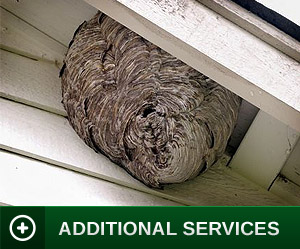 Appearance
Appearance
Woodchucks are stout, ranging in weight from 4 to 14 lbs. They have short, powerful legs with four clawed toes on the front feet and five toes on the hind ones. Small ears and a short, bushy tail with long, coarse body hair are all noticeable characteristics of this subterranean dweller. The name “groundhog” came about because of the woodchuck’s short legs and appearance of crouching close to the ground.
Behavior, Diet & Habits
These stocky animals are herbivorous (vegetarians). A woodchuck or two can lay ruin to a small-sized garden overnight. Their preferred diet consists of various grasses, plantains, alfalfa, clover and other green succulents. An adult will consume between 1 and 1.5 lbs. of vegetation daily.
In residential areas, woodchucks are typically found to burrow under homes, garages, patios or anything that can provide overhead security. The burrowing can become so extensive that these burrows have been known to weaken and cause the collapse of slabs and retaining walls.
In the wild, woodchucks prefer to make their home along embankments, at roadsides, in fields and open pastures. The greater part of their day is spent in the burrow. Feeding periods vary, based on conditions and season.
Woodchucks aren’t particularly fond of either high heat or the very cold, so they tend to stay underground during extreme temperatures. Woodchucks do hibernate and typically do so from mid-October to February.
The burrow system of the woodchuck isn’t nearly as extensive as the gopher’s. It’s located between two and four feet below the ground and extends about 15 to 20 feet. A woodchuck’s main nesting chamber is located at the end of the burrow. The main entrance is identifiable by a mound of earth around the above-ground opening. Any control of wildlife may have restrictions under wildlife control and game laws. This should only be done by a professionally licensed wildlife specialist.
Reproduction
Mating occurs shortly after emerging from hibernation, and a single litter is born to the female each year.
Signs of a Woodchuck Infestation
The three main signs include sightings of woodchucks, their burrows and their feeding damage.




